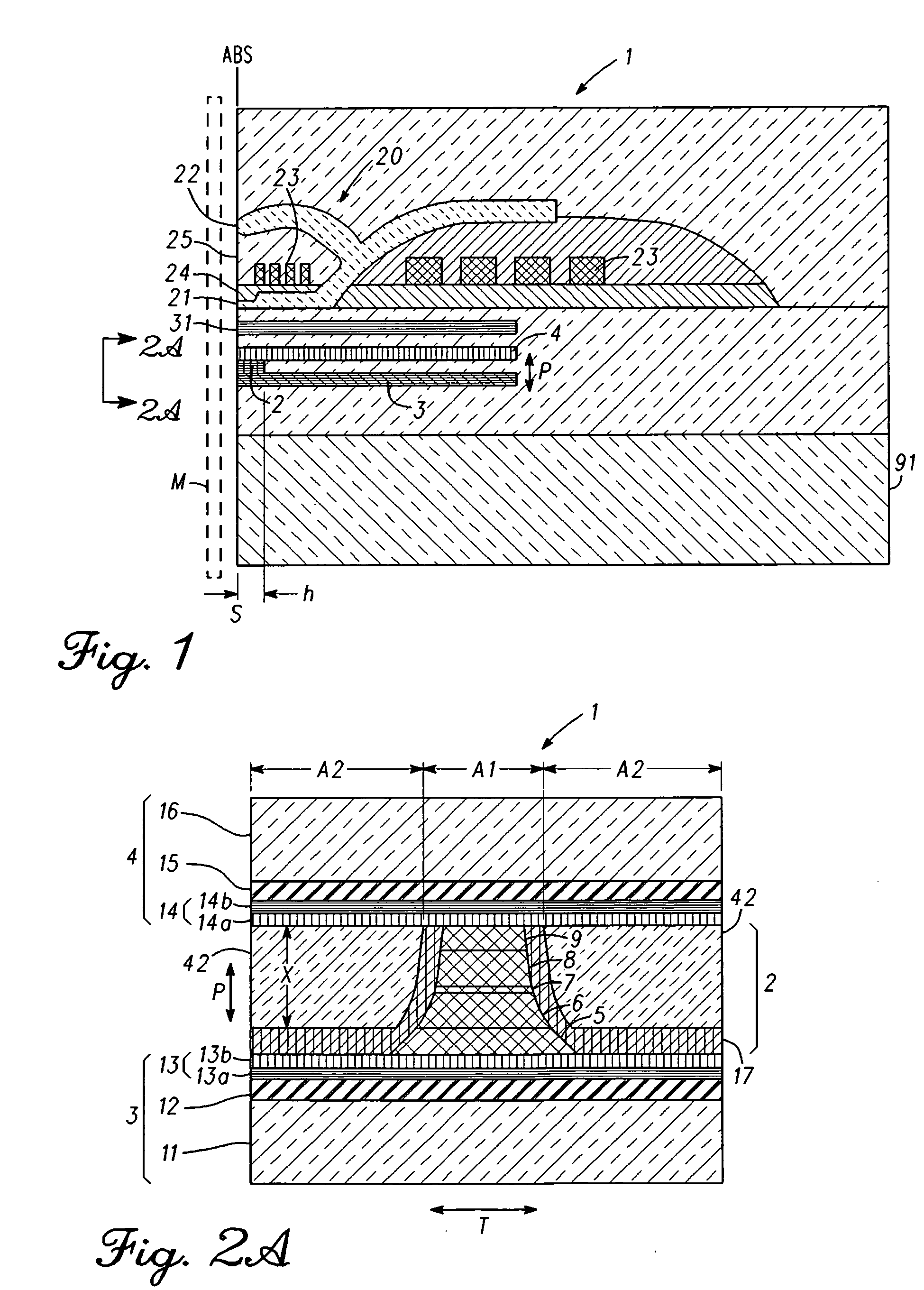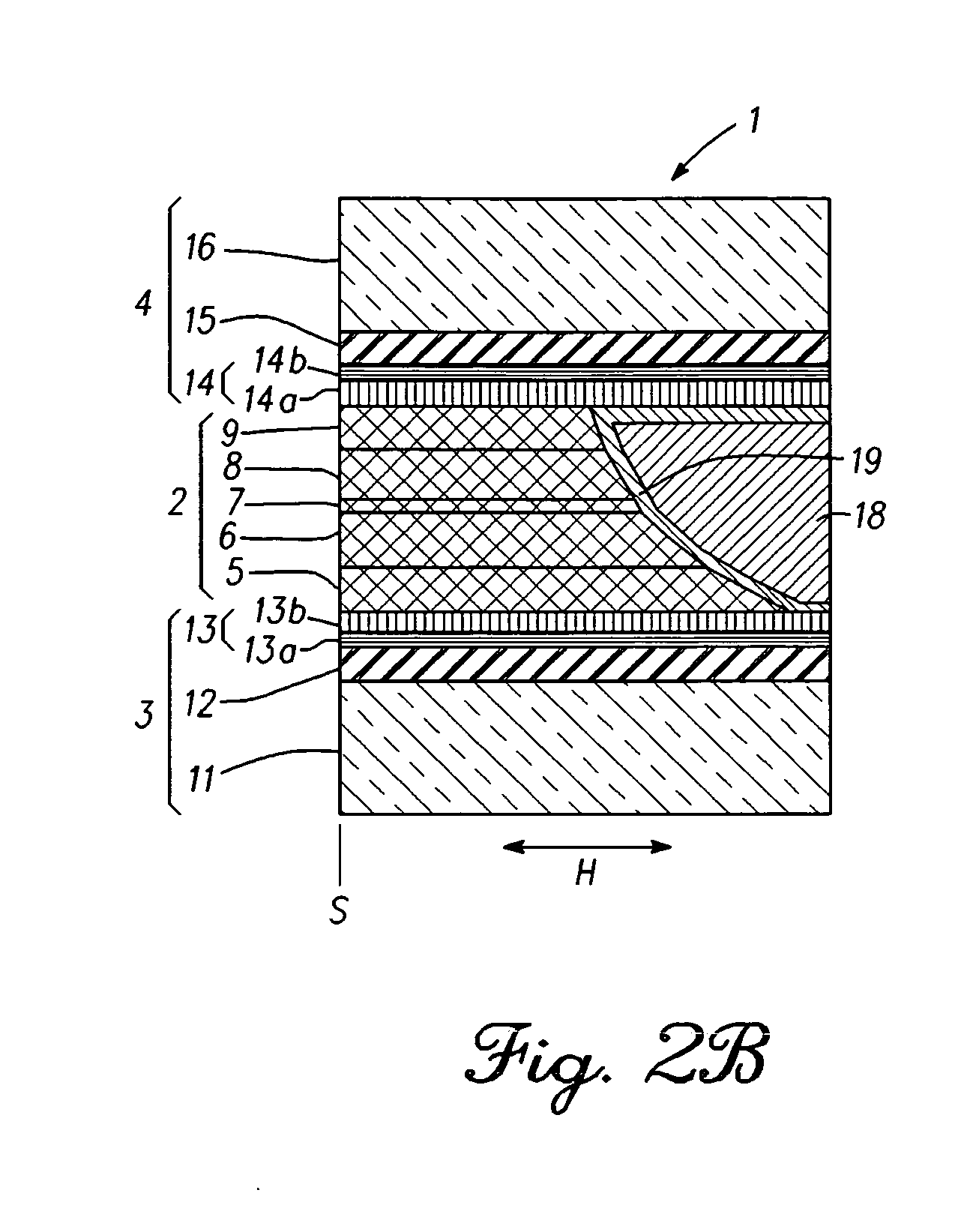Thin film magnetic head having a pair of magnetic layers whose magnetization is controlled by shield layers
a shield layer and magnetic head technology, applied in the field of thin film magnetic heads, can solve the problems of inability to improve the the most appropriate nonmagnetic middle layer, and the material utilizing as a nonmagnetic middle layer is limited, so as to achieve a low rate of change in magnetoresistance, reduce the reading gap, and increase the effect of magnetization resistance resistan
- Summary
- Abstract
- Description
- Claims
- Application Information
AI Technical Summary
Benefits of technology
Problems solved by technology
Method used
Image
Examples
example 1
[0071]After the first main shield layer 11 (NiFe) is formed using a plating method, a foundation layer (NiFe0.5 nm, not shown), the first antiferromagnetic layer 12 (IrMn 5 nm), the first exchange coupling magnetic field application layer 13 (CoFe 2.0 nm / NiFe 4.0 nm), the first magnetic coupling layer 5 (Ru 0.7 nm / CoFe 1.0 nm / Ru 0.7 nm / CoFe 1.0 nm / Ru 0.7 nm), the first MR magnetic layer 6 (NiFe 4.0 nm / CoFe 2.0 nm), the nonmagnetic middle layer 7(MgO 1.0 nm), the second MR magnetic layer 8 (CoFe 2.0 nm / NiFe 4.0 nm), the second magnetic coupling layer 9 (Ru 0.7 nm / CoFe 1.0 nm / Ru 0.7 nm / CoFe 1.0 nm / Ru 0.7 nm), a sacrifice magnetic layer (NiFe 2 nm) and a cap layer (Ru 2 nm) were formed in respective order using a magnetron sputtering method. After the film formation, a thermal treatment at 250° C. for 3 hours was applied, and after that, the above-mentioned film was processed to a column with 100×100 nm φ, and the side surface in the track width direction was covered with the insulatin...
example 2
[0075]It is known in general that some thickness is required for a material to function as a foundation layer. Then, the thickness required as a metal foundation layer to be laminated on alumina of amorphous was estimated. As the materials of the metal foundation layer, three types, Ta, Cr and CrTi, showing high Hex in Example 1 were used. Specifically, an Al2O3 layer (10 nm), a foundation layer (Ta, Cr, CrTi), the exchange coupling magnetic field application layer (NiFe 4.0 nm / CoFe 2.0 nm), the antiferromagnetic layer (IrMn 5 nm) and the cap layer (Ru 2 nm) were formed over a silicon wafer with thermally-oxidized film in respective order using the magnetron sputtering method. For the obtained samples, the exchange coupling intensity (Hex) between the antiferromagnetic layer and the exchange coupling magnetic field layer were measured using VSM. The results are shown in Table 4 and FIG. 7. For the all three types of materials, it was ascertained that Hex stays with 10% or less reduc...
PUM
| Property | Measurement | Unit |
|---|---|---|
| thickness | aaaaa | aaaaa |
| thickness | aaaaa | aaaaa |
| thickness | aaaaa | aaaaa |
Abstract
Description
Claims
Application Information
 Login to View More
Login to View More - R&D
- Intellectual Property
- Life Sciences
- Materials
- Tech Scout
- Unparalleled Data Quality
- Higher Quality Content
- 60% Fewer Hallucinations
Browse by: Latest US Patents, China's latest patents, Technical Efficacy Thesaurus, Application Domain, Technology Topic, Popular Technical Reports.
© 2025 PatSnap. All rights reserved.Legal|Privacy policy|Modern Slavery Act Transparency Statement|Sitemap|About US| Contact US: help@patsnap.com



